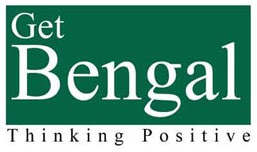Bengalish: the new voice of a changing generation - GetBengal Story

“Nana bhashaa nana mot nana poridhan, bibidher maajhe dekho milono mohan!” - Since childhood, we all have heard this beautiful line.It really shows us how India is a nation of different languages, cultures, and colours. Every few kilometers, there is something that changes - the food, the dress, the people, even the way they talk. And in this instance, West Bengal holds a very special status. It is the only state that combines almost everything - the calm hills of Darjeeling, the dark forests of Sundarbans, the open quiet seas of Digha, and I would say that if you really listen here, people speak in many different ways. Bengali, Hindi, English, Nepali, Santhali - all before you in one state. Even within Bengali, there are more than fifty accents! In terms of speech, North Bengalis differ from people from Kolkata and Midnapore; but they combine to give Bengali even more beauty - a lotus with a flower of a hundred petals, making each petal different, but a part of the one flower.
But with time, the world has changed. Generations have changed. The older generations - the millennials - grew up reading books, writing letters, and speaking in proper Bengali sentences. But today’s generation - Gen Z, Gen Alpha, and Gen Beta - are born in a digital world. They are surrounded by phones, the internet, YouTube, and web series. They are modern, fast, and very flexible. Naturally, their way of speaking has also changed. If you hear young people talking today, you will notice that they mix many languages while speaking. Bengali, Hindi, and English often come together in one single sentence. This new kind of speech is often called “Bengalish.” For example, someone might say, “Ajke class-e teacher ekdom savage chhilen,” or “Bhai, aaj mood off, totally cringe lagche.” These sentences show how today’s youth have created their own modern language - a blend of everything they hear and experience around them.
There are many reasons behind this change. One main reason is the education system. Most schools today are English-medium, so children grow up reading, writing, and even thinking in English. Another strong reason is the media. The younger generation watches international web series, movies, and social media content. They follow global creators and start using new English or Hindi words that they hear often. Slowly, these words mix with Bengali in their daily lives.
Now the big question is - is this change good or bad? Some people feel it is not good because we are slowly forgetting our pure mother tongue. They fear that one day, real Bengali might disappear from daily speech. But others believe it is a natural part of growth. Language is always evolving over time. The way our godparents articulated their speech was distinct from the vernacular of our parents, the same differences can be said for the difference in our speech compared to our parents. It shows how open, global, and self-advocating today’s youth is. It is probably not uncommon for a group of kids to write or speak in a mix of three languages, sometimes even the same sentence, and do it without thinking twice - NO FAULT IN THAT, ONLY A SKILL TO MASTER.
In the end, it is not about losing our culture but expanding it. The young generation is taking Bengali to new places - mixing it with the world, yet keeping its heart the same. Because whether we say “Ki vibes, bro?” or “Ki darun ekta din re aaj!”, the emotion behind the words is still Bengali. Change is not always loss; sometimes it is a sign of growth. Our Bangla is still alive - breathing, glowing, and growing - just like us.










